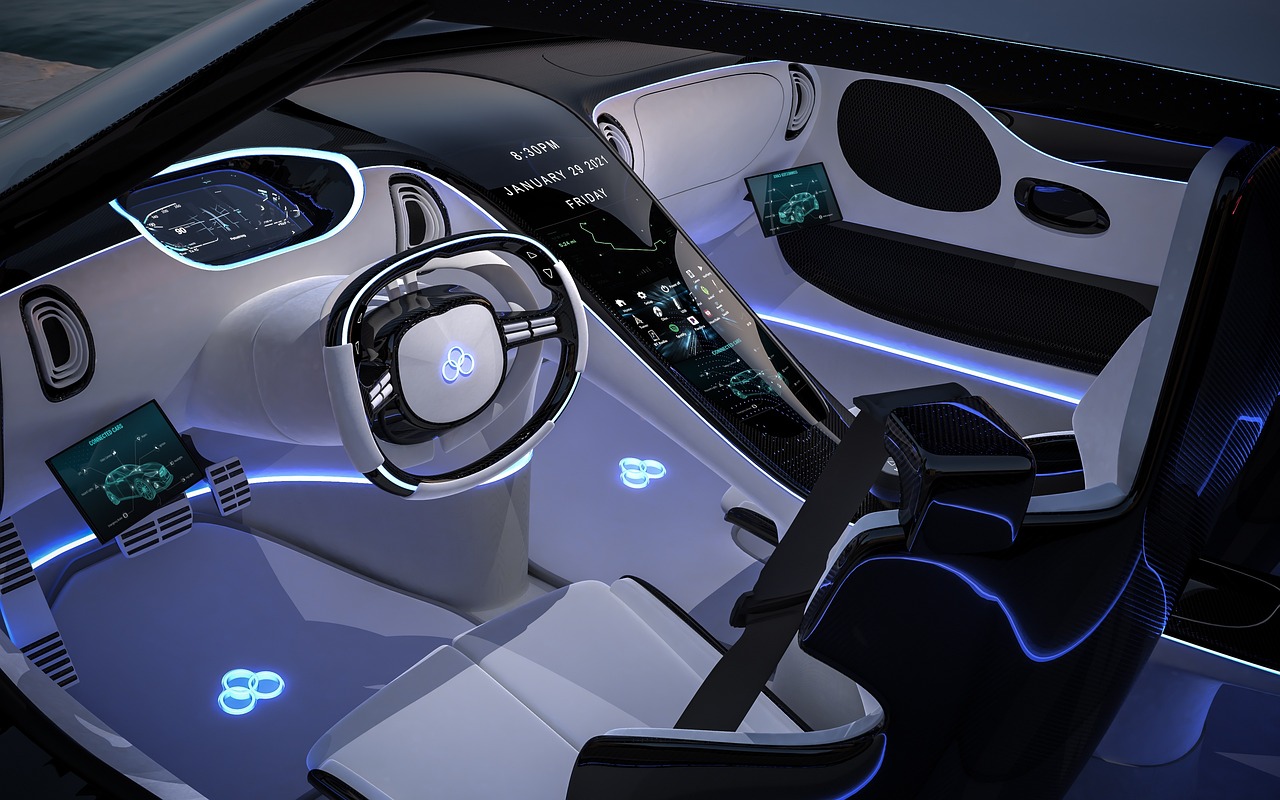Self-driving cars, also known as autonomous vehicles (AVs), are vehicles equipped with advanced sensors, cameras, and artificial intelligence (AI) systems that enable them to navigate and operate without human intervention. These vehicles are poised to revolutionize transportation by enhancing safety, efficiency, and accessibility. Here’s an overview of the key aspects of self-driving cars:
1. Levels of Autonomy
- Level 0-2: Assisted Driving: In these levels, the driver is still responsible for controlling the vehicle. Systems like adaptive cruise control, lane-keeping assistance, and automatic emergency braking provide support but do not fully control the vehicle.
- Level 3: Conditional Automation: At this level, the car can handle most driving tasks, but human intervention is required when the system requests it. The driver must be ready to take control at any moment.
- Level 4: High Automation: Vehicles can operate autonomously in specific conditions or environments, such as urban areas or highways, without human intervention. However, outside these conditions, human control is still necessary.
- Level 5: Full Automation: At this level, the vehicle is fully autonomous, capable of navigating any environment and condition without any human intervention. The car doesn’t require a steering wheel or pedals.
2. Key Technologies
- Sensors and Cameras: Self-driving cars use an array of sensors, including LiDAR (Light Detection and Ranging), radar, ultrasonic sensors, and cameras to perceive their surroundings. These sensors create a detailed 3D map of the environment, allowing the vehicle to detect objects, pedestrians, and other vehicles.
- Artificial Intelligence and Machine Learning: AI algorithms process the data collected by sensors to make real-time decisions. Machine learning techniques are used to improve the system’s performance over time, enabling the vehicle to learn from its experiences and adapt to new situations.
- Vehicle-to-Everything (V2X) Communication: This technology allows the vehicle to communicate with other vehicles, infrastructure, and even pedestrians. V2X communication can help prevent accidents by sharing information about traffic conditions, hazards, and road conditions.
3. Advantages of Self-Driving Cars
- Safety: One of the most significant benefits of self-driving cars is the potential to reduce traffic accidents, the majority of which are caused by human error. Autonomous vehicles can react faster than humans and are not susceptible to distractions or impairments.
- Traffic Efficiency: Autonomous vehicles can optimize driving patterns, reduce traffic congestion, and improve fuel efficiency by maintaining consistent speeds and distances between vehicles.
- Accessibility: Self-driving cars have the potential to provide mobility for individuals who are unable to drive, such as the elderly, disabled, or those without a driver’s license.
- Environmental Impact: By optimizing driving patterns and reducing congestion, self-driving cars could lower fuel consumption and greenhouse gas emissions. Additionally, the rise of electric autonomous vehicles could further reduce the environmental impact of transportation.
4. Challenges and Concerns
- Technical Challenges: Achieving full autonomy requires overcoming significant technical hurdles, particularly in complex urban environments where unpredictable events are common. Handling adverse weather conditions, like snow or heavy rain, also remains a challenge.
- Ethical and Legal Issues: The deployment of self-driving cars raises ethical questions, such as how the vehicle should prioritize decisions in a potential accident scenario (e.g., the trolley problem). Additionally, current legal frameworks need to evolve to address liability in accidents involving autonomous vehicles.
- Cybersecurity: As connected devices, self-driving cars are vulnerable to hacking and cyber-attacks, which could have severe consequences for safety and privacy. Ensuring robust cybersecurity measures is critical.
- Public Acceptance: While the technology is advancing, public trust in self-driving cars remains a barrier. Many people are hesitant to relinquish control to an automated system, particularly in situations involving their safety.
5. Current State and Future Prospects
- Testing and Deployment: Companies like Waymo, Tesla, Cruise, and Baidu are at the forefront of autonomous vehicle development. Waymo, a subsidiary of Alphabet (Google’s parent company), operates a fully autonomous ride-hailing service in certain parts of Phoenix, Arizona. Tesla’s Full Self-Driving (FSD) system offers advanced driver assistance, though it still requires human supervision.
- Regulatory Environment: Governments worldwide are developing regulations and guidelines for the deployment of autonomous vehicles. Some regions are more advanced in creating supportive environments for testing and deployment, while others are still in the early stages of regulatory development.
- Economic and Social Impact: The widespread adoption of self-driving cars could have profound economic and social impacts. It could lead to changes in employment, particularly for drivers in industries like trucking and ride-hailing. Additionally, it could reshape urban planning by reducing the need for parking spaces and potentially decreasing private car ownership in favor of shared autonomous fleets.
Self-driving cars represent a significant technological leap with the potential to transform transportation. While the road to full autonomy is fraught with challenges, ongoing advancements suggest that autonomous vehicles will play a crucial role in the future of mobility.
Share this content:

